An Assessment of Child Labour within the Global Fashion Industry
VerifiedAdded on 2019/12/03
|43
|15835
|34
Report
AI Summary
This report provides a comprehensive assessment of child labour within the fashion industry. It begins by defining the issue and its background, highlighting the prevalence of child labour in garment and textile manufacturing, driven by fast fashion and the availability of cheap labour in developing countries. The report then outlines the project's rational, aims, and objectives, including an analysis of child labour abuse, its impact on customer buying decisions, and the role of Corporate Social Responsibility (CSR) policies and government regulations. The methodology involves secondary data collection and thematic analysis. The findings reveal that child labour negatively affects customer purchasing decisions and the overall economic development of the fashion industry. The study concludes with recommendations for reducing child labour, emphasizing education, public involvement, stronger laws, and improved governance, offering valuable insights for industry stakeholders and policymakers.
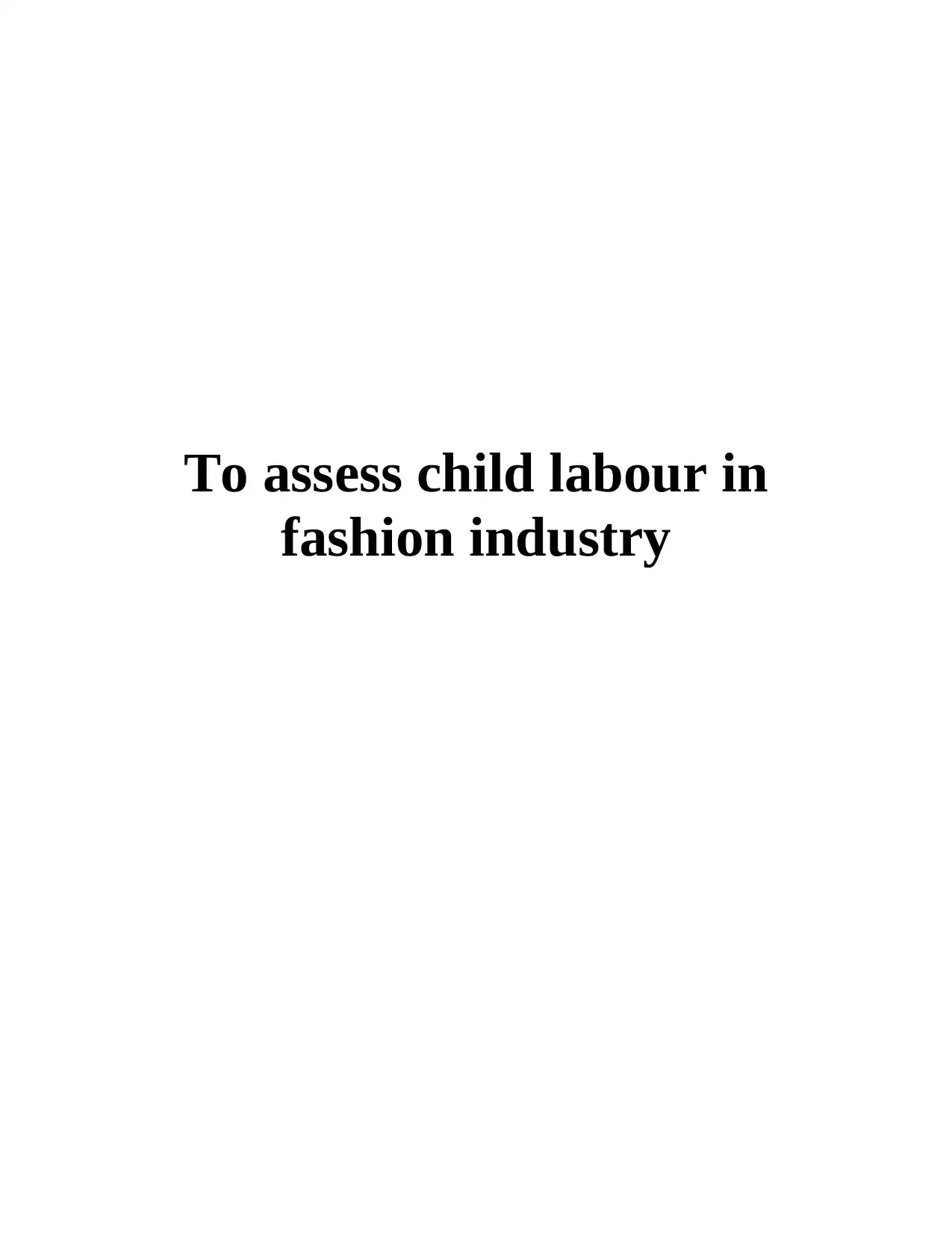
To assess child labour in
fashion industry
fashion industry
Paraphrase This Document
Need a fresh take? Get an instant paraphrase of this document with our AI Paraphraser
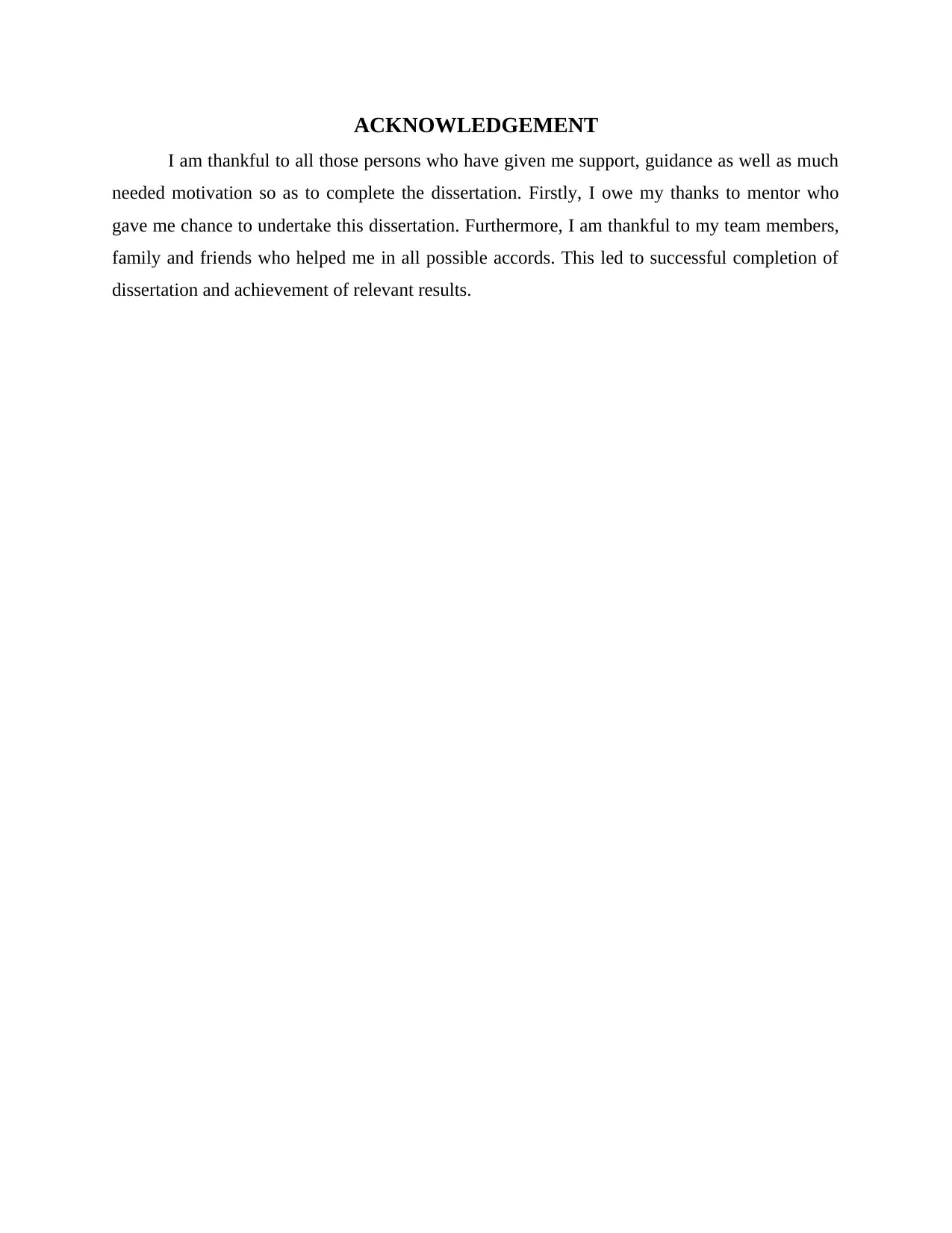
ACKNOWLEDGEMENT
I am thankful to all those persons who have given me support, guidance as well as much
needed motivation so as to complete the dissertation. Firstly, I owe my thanks to mentor who
gave me chance to undertake this dissertation. Furthermore, I am thankful to my team members,
family and friends who helped me in all possible accords. This led to successful completion of
dissertation and achievement of relevant results.
I am thankful to all those persons who have given me support, guidance as well as much
needed motivation so as to complete the dissertation. Firstly, I owe my thanks to mentor who
gave me chance to undertake this dissertation. Furthermore, I am thankful to my team members,
family and friends who helped me in all possible accords. This led to successful completion of
dissertation and achievement of relevant results.
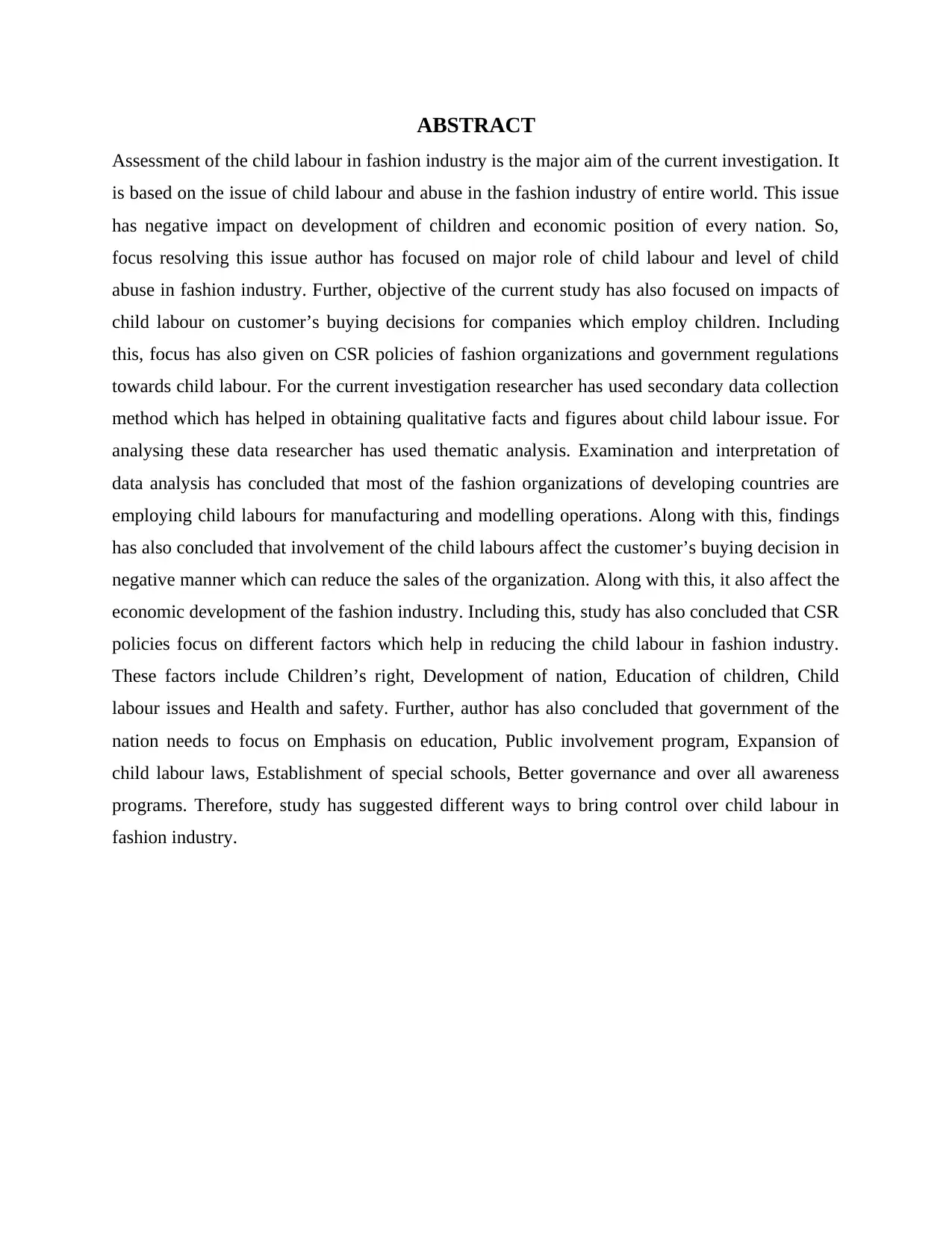
ABSTRACT
Assessment of the child labour in fashion industry is the major aim of the current investigation. It
is based on the issue of child labour and abuse in the fashion industry of entire world. This issue
has negative impact on development of children and economic position of every nation. So,
focus resolving this issue author has focused on major role of child labour and level of child
abuse in fashion industry. Further, objective of the current study has also focused on impacts of
child labour on customer’s buying decisions for companies which employ children. Including
this, focus has also given on CSR policies of fashion organizations and government regulations
towards child labour. For the current investigation researcher has used secondary data collection
method which has helped in obtaining qualitative facts and figures about child labour issue. For
analysing these data researcher has used thematic analysis. Examination and interpretation of
data analysis has concluded that most of the fashion organizations of developing countries are
employing child labours for manufacturing and modelling operations. Along with this, findings
has also concluded that involvement of the child labours affect the customer’s buying decision in
negative manner which can reduce the sales of the organization. Along with this, it also affect the
economic development of the fashion industry. Including this, study has also concluded that CSR
policies focus on different factors which help in reducing the child labour in fashion industry.
These factors include Children’s right, Development of nation, Education of children, Child
labour issues and Health and safety. Further, author has also concluded that government of the
nation needs to focus on Emphasis on education, Public involvement program, Expansion of
child labour laws, Establishment of special schools, Better governance and over all awareness
programs. Therefore, study has suggested different ways to bring control over child labour in
fashion industry.
Assessment of the child labour in fashion industry is the major aim of the current investigation. It
is based on the issue of child labour and abuse in the fashion industry of entire world. This issue
has negative impact on development of children and economic position of every nation. So,
focus resolving this issue author has focused on major role of child labour and level of child
abuse in fashion industry. Further, objective of the current study has also focused on impacts of
child labour on customer’s buying decisions for companies which employ children. Including
this, focus has also given on CSR policies of fashion organizations and government regulations
towards child labour. For the current investigation researcher has used secondary data collection
method which has helped in obtaining qualitative facts and figures about child labour issue. For
analysing these data researcher has used thematic analysis. Examination and interpretation of
data analysis has concluded that most of the fashion organizations of developing countries are
employing child labours for manufacturing and modelling operations. Along with this, findings
has also concluded that involvement of the child labours affect the customer’s buying decision in
negative manner which can reduce the sales of the organization. Along with this, it also affect the
economic development of the fashion industry. Including this, study has also concluded that CSR
policies focus on different factors which help in reducing the child labour in fashion industry.
These factors include Children’s right, Development of nation, Education of children, Child
labour issues and Health and safety. Further, author has also concluded that government of the
nation needs to focus on Emphasis on education, Public involvement program, Expansion of
child labour laws, Establishment of special schools, Better governance and over all awareness
programs. Therefore, study has suggested different ways to bring control over child labour in
fashion industry.
⊘ This is a preview!⊘
Do you want full access?
Subscribe today to unlock all pages.

Trusted by 1+ million students worldwide
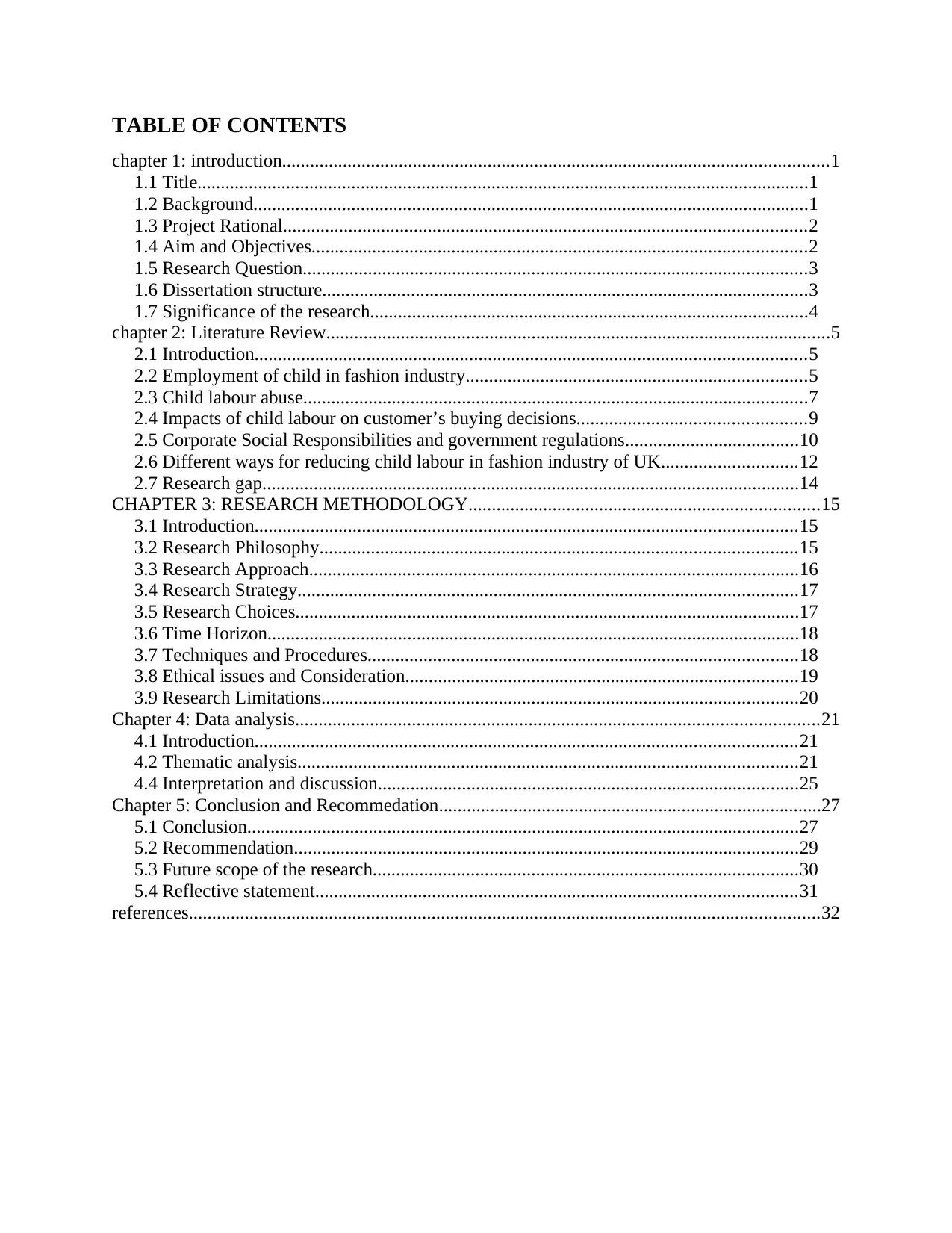
TABLE OF CONTENTS
chapter 1: introduction.....................................................................................................................1
1.1 Title...................................................................................................................................1
1.2 Background.......................................................................................................................1
1.3 Project Rational................................................................................................................2
1.4 Aim and Objectives..........................................................................................................2
1.5 Research Question............................................................................................................3
1.6 Dissertation structure........................................................................................................3
1.7 Significance of the research..............................................................................................4
chapter 2: Literature Review............................................................................................................5
2.1 Introduction......................................................................................................................5
2.2 Employment of child in fashion industry.........................................................................5
2.3 Child labour abuse............................................................................................................7
2.4 Impacts of child labour on customer’s buying decisions.................................................9
2.5 Corporate Social Responsibilities and government regulations.....................................10
2.6 Different ways for reducing child labour in fashion industry of UK.............................12
2.7 Research gap...................................................................................................................14
CHAPTER 3: RESEARCH METHODOLOGY...........................................................................15
3.1 Introduction....................................................................................................................15
3.2 Research Philosophy......................................................................................................15
3.3 Research Approach.........................................................................................................16
3.4 Research Strategy...........................................................................................................17
3.5 Research Choices............................................................................................................17
3.6 Time Horizon..................................................................................................................18
3.7 Techniques and Procedures............................................................................................18
3.8 Ethical issues and Consideration....................................................................................19
3.9 Research Limitations......................................................................................................20
Chapter 4: Data analysis................................................................................................................21
4.1 Introduction....................................................................................................................21
4.2 Thematic analysis...........................................................................................................21
4.4 Interpretation and discussion..........................................................................................25
Chapter 5: Conclusion and Recommedation..................................................................................27
5.1 Conclusion......................................................................................................................27
5.2 Recommendation............................................................................................................29
5.3 Future scope of the research...........................................................................................30
5.4 Reflective statement.......................................................................................................31
references.......................................................................................................................................32
chapter 1: introduction.....................................................................................................................1
1.1 Title...................................................................................................................................1
1.2 Background.......................................................................................................................1
1.3 Project Rational................................................................................................................2
1.4 Aim and Objectives..........................................................................................................2
1.5 Research Question............................................................................................................3
1.6 Dissertation structure........................................................................................................3
1.7 Significance of the research..............................................................................................4
chapter 2: Literature Review............................................................................................................5
2.1 Introduction......................................................................................................................5
2.2 Employment of child in fashion industry.........................................................................5
2.3 Child labour abuse............................................................................................................7
2.4 Impacts of child labour on customer’s buying decisions.................................................9
2.5 Corporate Social Responsibilities and government regulations.....................................10
2.6 Different ways for reducing child labour in fashion industry of UK.............................12
2.7 Research gap...................................................................................................................14
CHAPTER 3: RESEARCH METHODOLOGY...........................................................................15
3.1 Introduction....................................................................................................................15
3.2 Research Philosophy......................................................................................................15
3.3 Research Approach.........................................................................................................16
3.4 Research Strategy...........................................................................................................17
3.5 Research Choices............................................................................................................17
3.6 Time Horizon..................................................................................................................18
3.7 Techniques and Procedures............................................................................................18
3.8 Ethical issues and Consideration....................................................................................19
3.9 Research Limitations......................................................................................................20
Chapter 4: Data analysis................................................................................................................21
4.1 Introduction....................................................................................................................21
4.2 Thematic analysis...........................................................................................................21
4.4 Interpretation and discussion..........................................................................................25
Chapter 5: Conclusion and Recommedation..................................................................................27
5.1 Conclusion......................................................................................................................27
5.2 Recommendation............................................................................................................29
5.3 Future scope of the research...........................................................................................30
5.4 Reflective statement.......................................................................................................31
references.......................................................................................................................................32
Paraphrase This Document
Need a fresh take? Get an instant paraphrase of this document with our AI Paraphraser
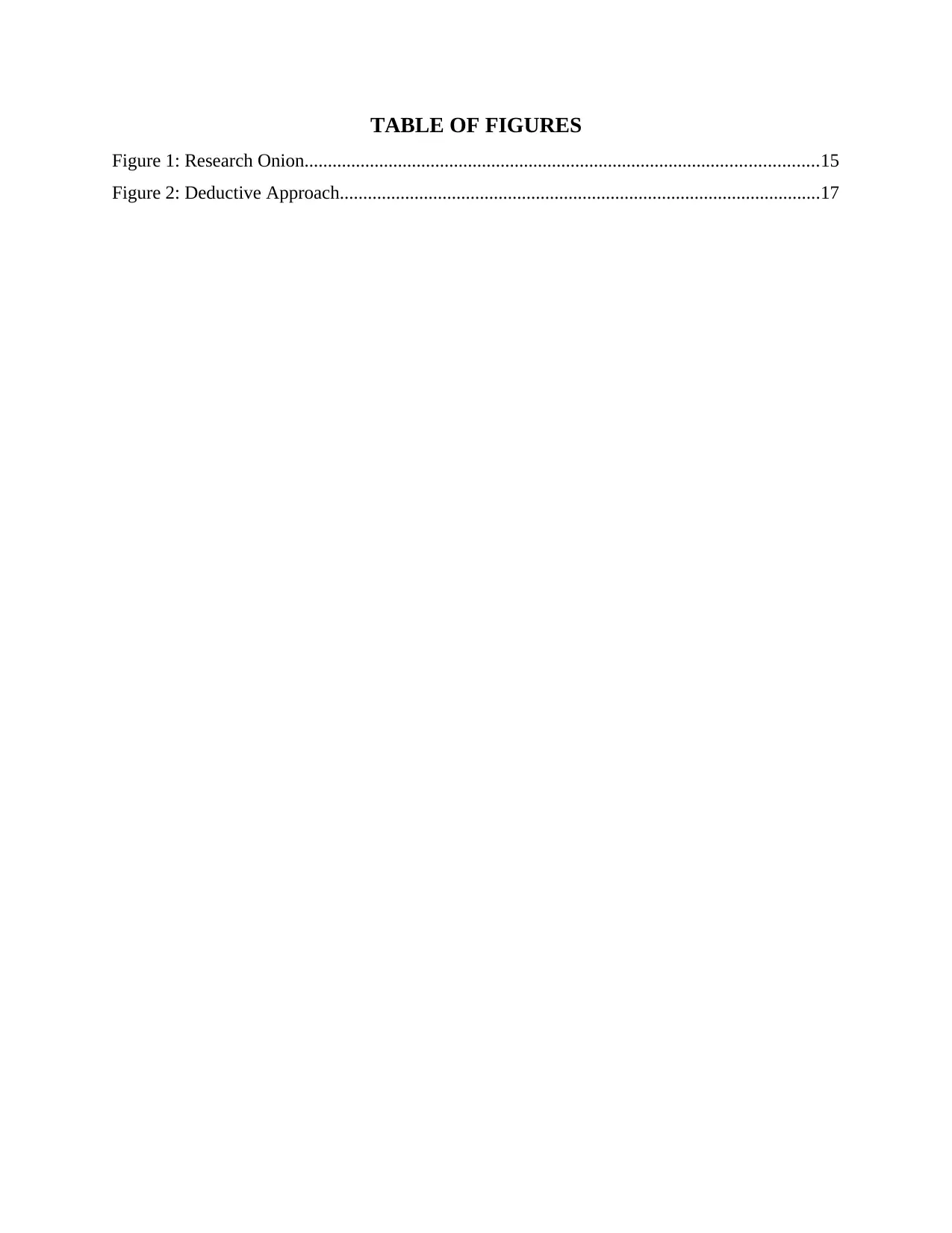
TABLE OF FIGURES
Figure 1: Research Onion..............................................................................................................15
Figure 2: Deductive Approach.......................................................................................................17
Figure 1: Research Onion..............................................................................................................15
Figure 2: Deductive Approach.......................................................................................................17
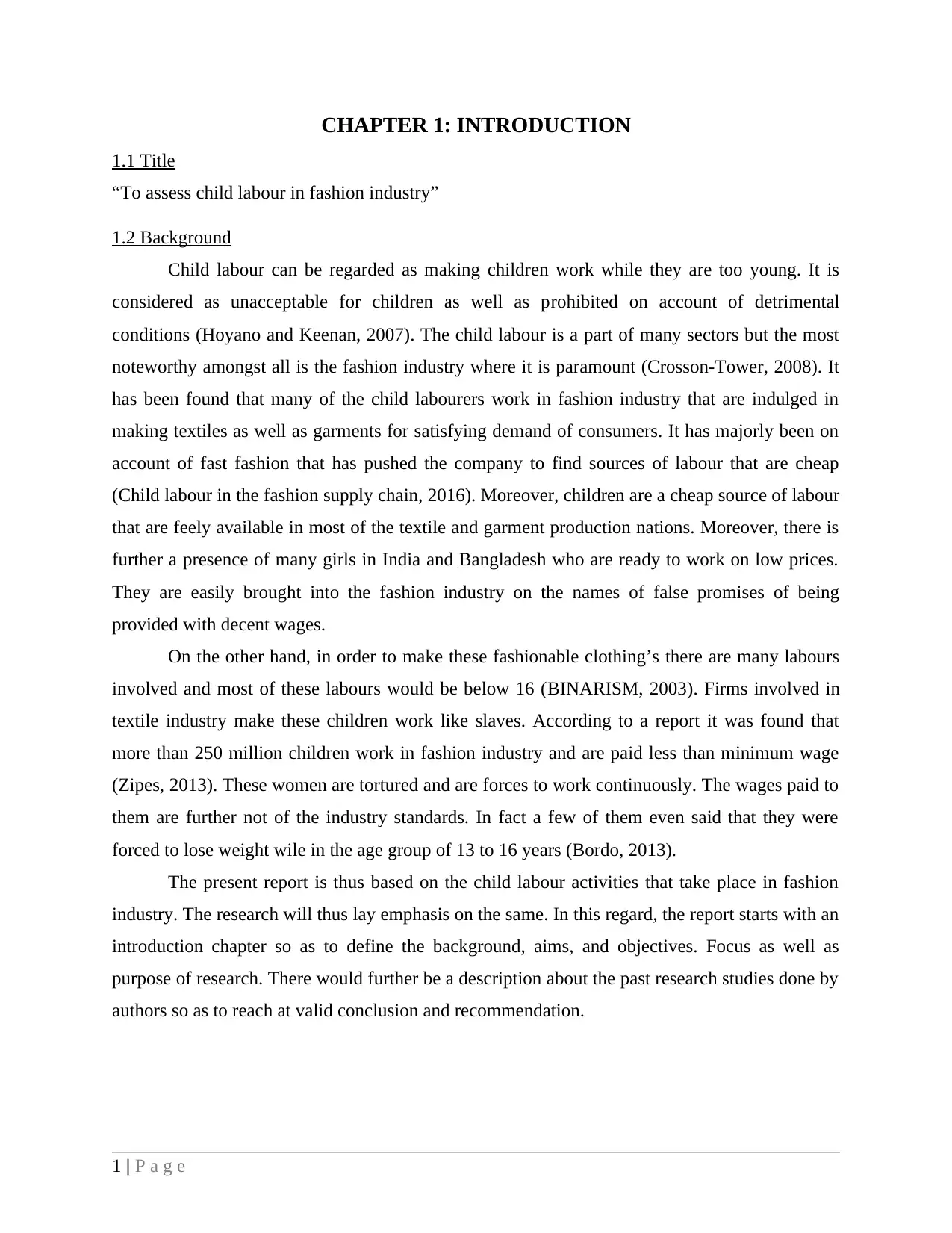
CHAPTER 1: INTRODUCTION
1.1 Title
“To assess child labour in fashion industry”
1.2 Background
Child labour can be regarded as making children work while they are too young. It is
considered as unacceptable for children as well as prohibited on account of detrimental
conditions (Hoyano and Keenan, 2007). The child labour is a part of many sectors but the most
noteworthy amongst all is the fashion industry where it is paramount (Crosson-Tower, 2008). It
has been found that many of the child labourers work in fashion industry that are indulged in
making textiles as well as garments for satisfying demand of consumers. It has majorly been on
account of fast fashion that has pushed the company to find sources of labour that are cheap
(Child labour in the fashion supply chain, 2016). Moreover, children are a cheap source of labour
that are feely available in most of the textile and garment production nations. Moreover, there is
further a presence of many girls in India and Bangladesh who are ready to work on low prices.
They are easily brought into the fashion industry on the names of false promises of being
provided with decent wages.
On the other hand, in order to make these fashionable clothing’s there are many labours
involved and most of these labours would be below 16 (BINARISM, 2003). Firms involved in
textile industry make these children work like slaves. According to a report it was found that
more than 250 million children work in fashion industry and are paid less than minimum wage
(Zipes, 2013). These women are tortured and are forces to work continuously. The wages paid to
them are further not of the industry standards. In fact a few of them even said that they were
forced to lose weight wile in the age group of 13 to 16 years (Bordo, 2013).
The present report is thus based on the child labour activities that take place in fashion
industry. The research will thus lay emphasis on the same. In this regard, the report starts with an
introduction chapter so as to define the background, aims, and objectives. Focus as well as
purpose of research. There would further be a description about the past research studies done by
authors so as to reach at valid conclusion and recommendation.
1 | P a g e
1.1 Title
“To assess child labour in fashion industry”
1.2 Background
Child labour can be regarded as making children work while they are too young. It is
considered as unacceptable for children as well as prohibited on account of detrimental
conditions (Hoyano and Keenan, 2007). The child labour is a part of many sectors but the most
noteworthy amongst all is the fashion industry where it is paramount (Crosson-Tower, 2008). It
has been found that many of the child labourers work in fashion industry that are indulged in
making textiles as well as garments for satisfying demand of consumers. It has majorly been on
account of fast fashion that has pushed the company to find sources of labour that are cheap
(Child labour in the fashion supply chain, 2016). Moreover, children are a cheap source of labour
that are feely available in most of the textile and garment production nations. Moreover, there is
further a presence of many girls in India and Bangladesh who are ready to work on low prices.
They are easily brought into the fashion industry on the names of false promises of being
provided with decent wages.
On the other hand, in order to make these fashionable clothing’s there are many labours
involved and most of these labours would be below 16 (BINARISM, 2003). Firms involved in
textile industry make these children work like slaves. According to a report it was found that
more than 250 million children work in fashion industry and are paid less than minimum wage
(Zipes, 2013). These women are tortured and are forces to work continuously. The wages paid to
them are further not of the industry standards. In fact a few of them even said that they were
forced to lose weight wile in the age group of 13 to 16 years (Bordo, 2013).
The present report is thus based on the child labour activities that take place in fashion
industry. The research will thus lay emphasis on the same. In this regard, the report starts with an
introduction chapter so as to define the background, aims, and objectives. Focus as well as
purpose of research. There would further be a description about the past research studies done by
authors so as to reach at valid conclusion and recommendation.
1 | P a g e
⊘ This is a preview!⊘
Do you want full access?
Subscribe today to unlock all pages.

Trusted by 1+ million students worldwide
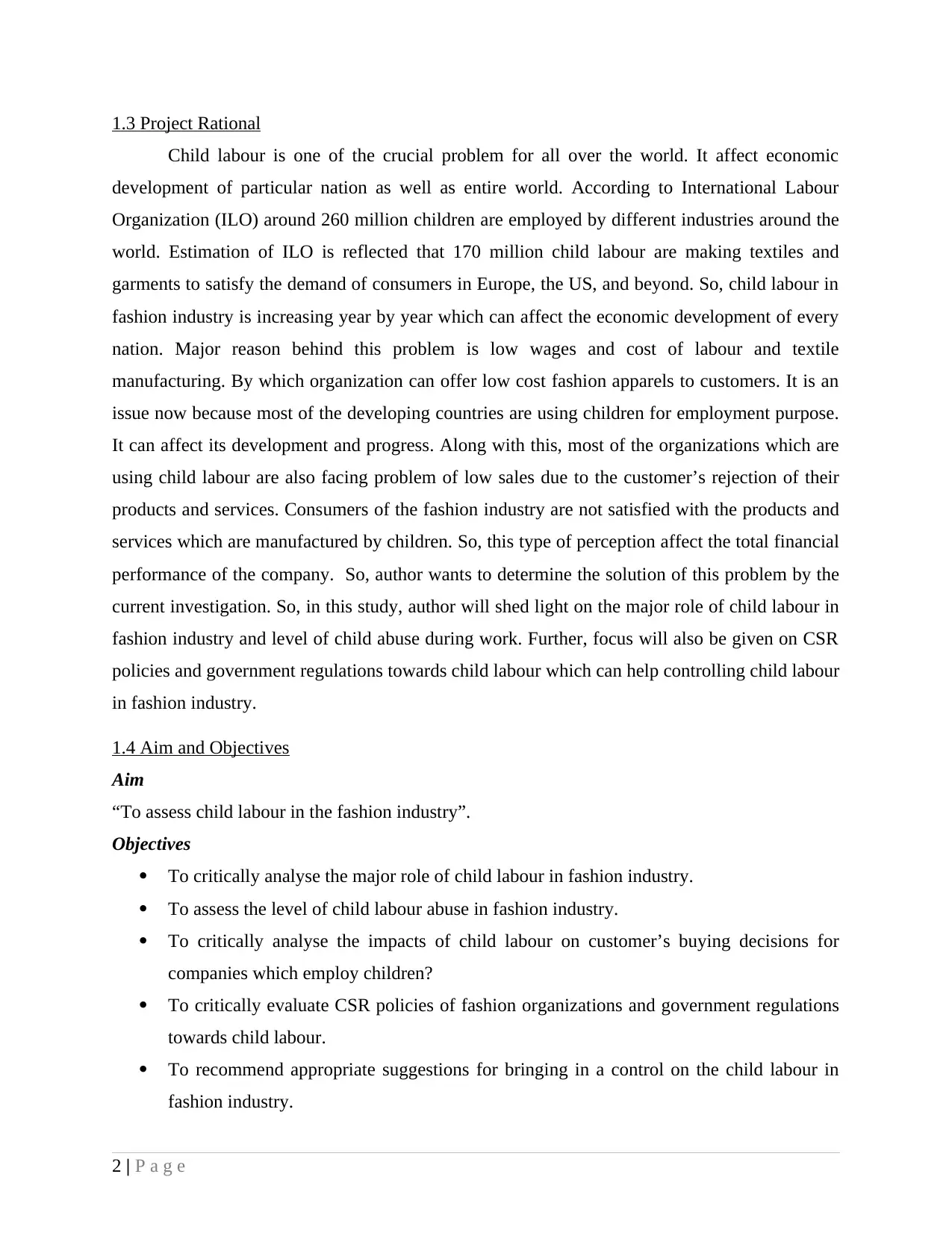
1.3 Project Rational
Child labour is one of the crucial problem for all over the world. It affect economic
development of particular nation as well as entire world. According to International Labour
Organization (ILO) around 260 million children are employed by different industries around the
world. Estimation of ILO is reflected that 170 million child labour are making textiles and
garments to satisfy the demand of consumers in Europe, the US, and beyond. So, child labour in
fashion industry is increasing year by year which can affect the economic development of every
nation. Major reason behind this problem is low wages and cost of labour and textile
manufacturing. By which organization can offer low cost fashion apparels to customers. It is an
issue now because most of the developing countries are using children for employment purpose.
It can affect its development and progress. Along with this, most of the organizations which are
using child labour are also facing problem of low sales due to the customer’s rejection of their
products and services. Consumers of the fashion industry are not satisfied with the products and
services which are manufactured by children. So, this type of perception affect the total financial
performance of the company. So, author wants to determine the solution of this problem by the
current investigation. So, in this study, author will shed light on the major role of child labour in
fashion industry and level of child abuse during work. Further, focus will also be given on CSR
policies and government regulations towards child labour which can help controlling child labour
in fashion industry.
1.4 Aim and Objectives
Aim
“To assess child labour in the fashion industry”.
Objectives
To critically analyse the major role of child labour in fashion industry.
To assess the level of child labour abuse in fashion industry.
To critically analyse the impacts of child labour on customer’s buying decisions for
companies which employ children?
To critically evaluate CSR policies of fashion organizations and government regulations
towards child labour.
To recommend appropriate suggestions for bringing in a control on the child labour in
fashion industry.
2 | P a g e
Child labour is one of the crucial problem for all over the world. It affect economic
development of particular nation as well as entire world. According to International Labour
Organization (ILO) around 260 million children are employed by different industries around the
world. Estimation of ILO is reflected that 170 million child labour are making textiles and
garments to satisfy the demand of consumers in Europe, the US, and beyond. So, child labour in
fashion industry is increasing year by year which can affect the economic development of every
nation. Major reason behind this problem is low wages and cost of labour and textile
manufacturing. By which organization can offer low cost fashion apparels to customers. It is an
issue now because most of the developing countries are using children for employment purpose.
It can affect its development and progress. Along with this, most of the organizations which are
using child labour are also facing problem of low sales due to the customer’s rejection of their
products and services. Consumers of the fashion industry are not satisfied with the products and
services which are manufactured by children. So, this type of perception affect the total financial
performance of the company. So, author wants to determine the solution of this problem by the
current investigation. So, in this study, author will shed light on the major role of child labour in
fashion industry and level of child abuse during work. Further, focus will also be given on CSR
policies and government regulations towards child labour which can help controlling child labour
in fashion industry.
1.4 Aim and Objectives
Aim
“To assess child labour in the fashion industry”.
Objectives
To critically analyse the major role of child labour in fashion industry.
To assess the level of child labour abuse in fashion industry.
To critically analyse the impacts of child labour on customer’s buying decisions for
companies which employ children?
To critically evaluate CSR policies of fashion organizations and government regulations
towards child labour.
To recommend appropriate suggestions for bringing in a control on the child labour in
fashion industry.
2 | P a g e
Paraphrase This Document
Need a fresh take? Get an instant paraphrase of this document with our AI Paraphraser
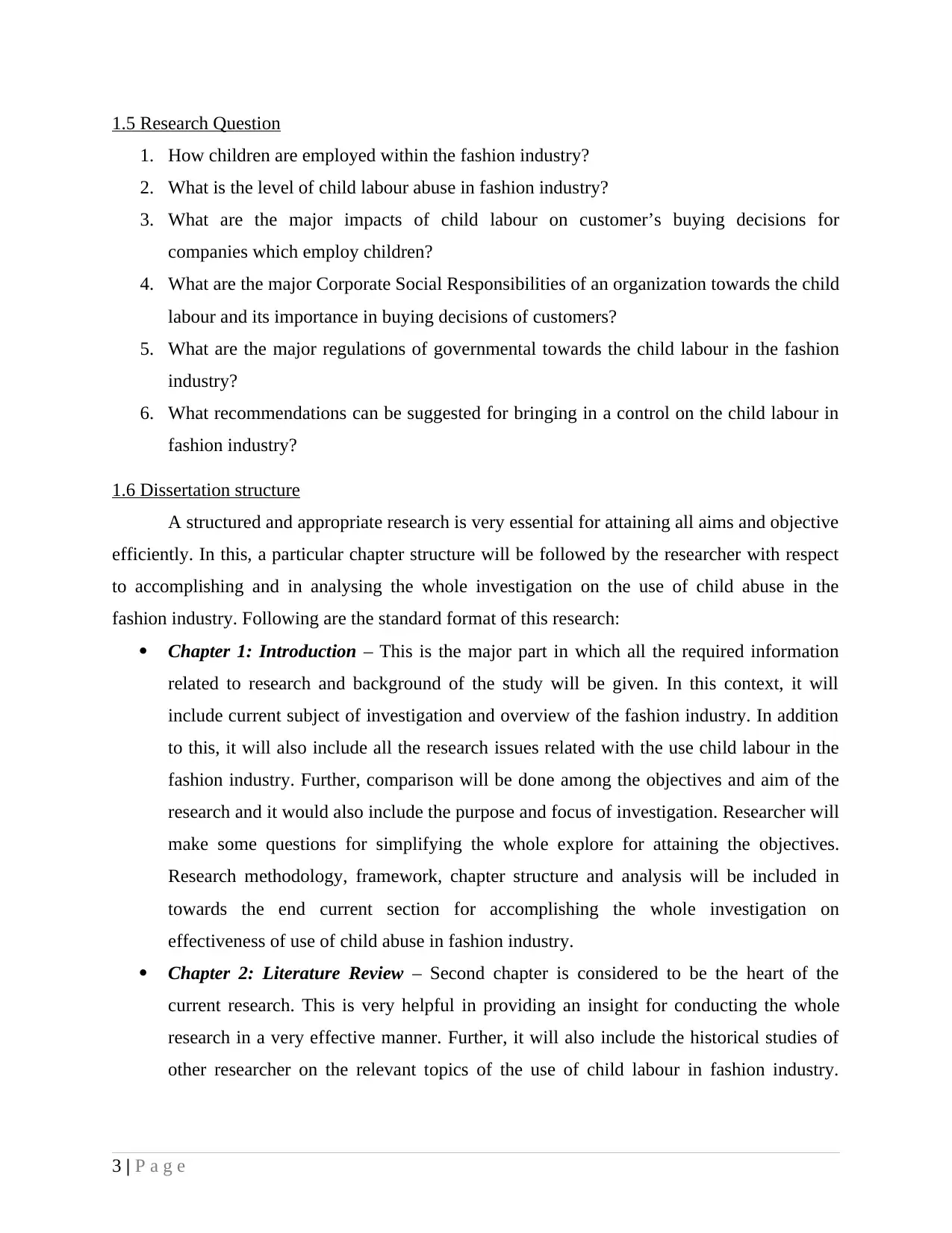
1.5 Research Question
1. How children are employed within the fashion industry?
2. What is the level of child labour abuse in fashion industry?
3. What are the major impacts of child labour on customer’s buying decisions for
companies which employ children?
4. What are the major Corporate Social Responsibilities of an organization towards the child
labour and its importance in buying decisions of customers?
5. What are the major regulations of governmental towards the child labour in the fashion
industry?
6. What recommendations can be suggested for bringing in a control on the child labour in
fashion industry?
1.6 Dissertation structure
A structured and appropriate research is very essential for attaining all aims and objective
efficiently. In this, a particular chapter structure will be followed by the researcher with respect
to accomplishing and in analysing the whole investigation on the use of child abuse in the
fashion industry. Following are the standard format of this research:
Chapter 1: Introduction – This is the major part in which all the required information
related to research and background of the study will be given. In this context, it will
include current subject of investigation and overview of the fashion industry. In addition
to this, it will also include all the research issues related with the use child labour in the
fashion industry. Further, comparison will be done among the objectives and aim of the
research and it would also include the purpose and focus of investigation. Researcher will
make some questions for simplifying the whole explore for attaining the objectives.
Research methodology, framework, chapter structure and analysis will be included in
towards the end current section for accomplishing the whole investigation on
effectiveness of use of child abuse in fashion industry.
Chapter 2: Literature Review – Second chapter is considered to be the heart of the
current research. This is very helpful in providing an insight for conducting the whole
research in a very effective manner. Further, it will also include the historical studies of
other researcher on the relevant topics of the use of child labour in fashion industry.
3 | P a g e
1. How children are employed within the fashion industry?
2. What is the level of child labour abuse in fashion industry?
3. What are the major impacts of child labour on customer’s buying decisions for
companies which employ children?
4. What are the major Corporate Social Responsibilities of an organization towards the child
labour and its importance in buying decisions of customers?
5. What are the major regulations of governmental towards the child labour in the fashion
industry?
6. What recommendations can be suggested for bringing in a control on the child labour in
fashion industry?
1.6 Dissertation structure
A structured and appropriate research is very essential for attaining all aims and objective
efficiently. In this, a particular chapter structure will be followed by the researcher with respect
to accomplishing and in analysing the whole investigation on the use of child abuse in the
fashion industry. Following are the standard format of this research:
Chapter 1: Introduction – This is the major part in which all the required information
related to research and background of the study will be given. In this context, it will
include current subject of investigation and overview of the fashion industry. In addition
to this, it will also include all the research issues related with the use child labour in the
fashion industry. Further, comparison will be done among the objectives and aim of the
research and it would also include the purpose and focus of investigation. Researcher will
make some questions for simplifying the whole explore for attaining the objectives.
Research methodology, framework, chapter structure and analysis will be included in
towards the end current section for accomplishing the whole investigation on
effectiveness of use of child abuse in fashion industry.
Chapter 2: Literature Review – Second chapter is considered to be the heart of the
current research. This is very helpful in providing an insight for conducting the whole
research in a very effective manner. Further, it will also include the historical studies of
other researcher on the relevant topics of the use of child labour in fashion industry.
3 | P a g e
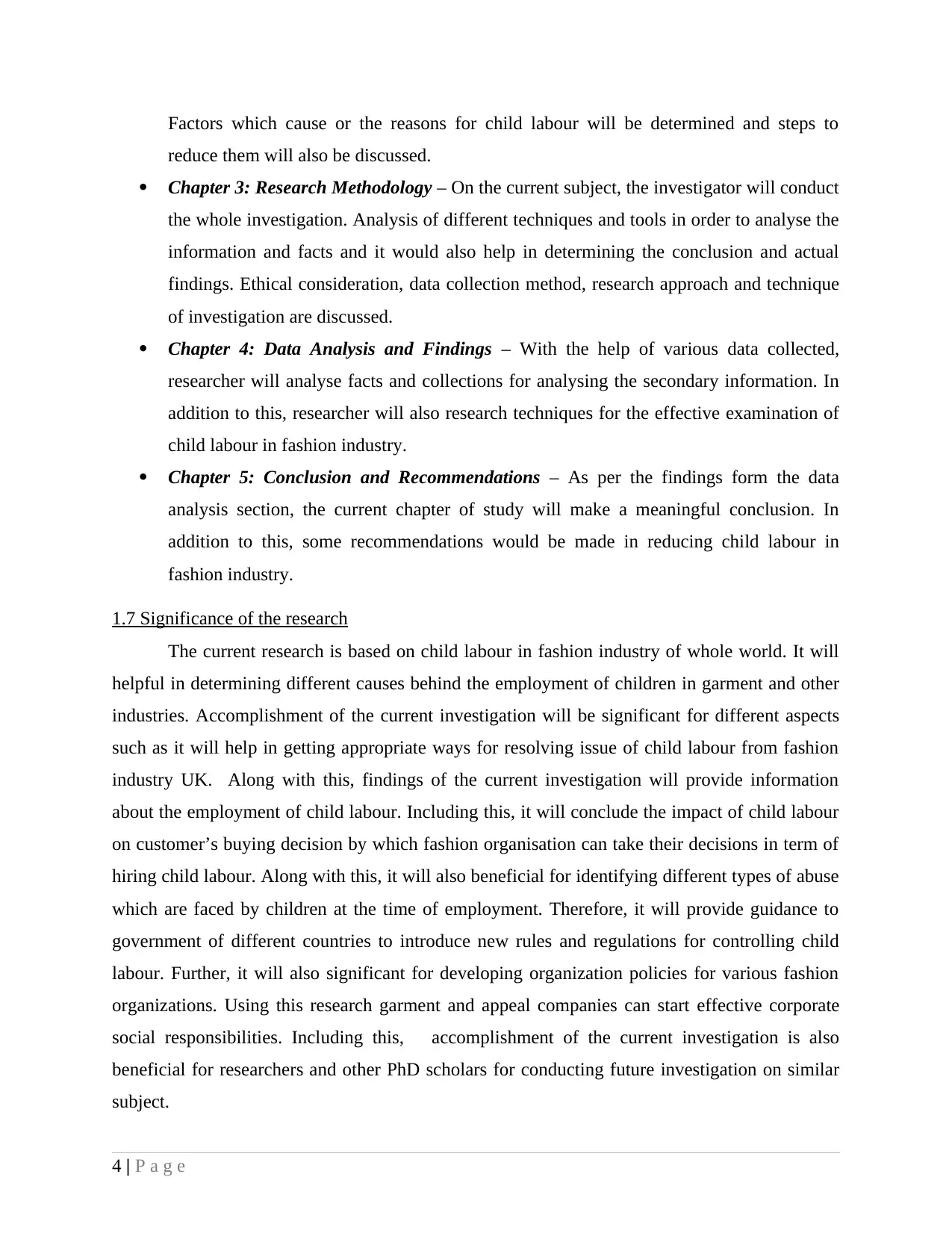
Factors which cause or the reasons for child labour will be determined and steps to
reduce them will also be discussed.
Chapter 3: Research Methodology – On the current subject, the investigator will conduct
the whole investigation. Analysis of different techniques and tools in order to analyse the
information and facts and it would also help in determining the conclusion and actual
findings. Ethical consideration, data collection method, research approach and technique
of investigation are discussed.
Chapter 4: Data Analysis and Findings – With the help of various data collected,
researcher will analyse facts and collections for analysing the secondary information. In
addition to this, researcher will also research techniques for the effective examination of
child labour in fashion industry.
Chapter 5: Conclusion and Recommendations – As per the findings form the data
analysis section, the current chapter of study will make a meaningful conclusion. In
addition to this, some recommendations would be made in reducing child labour in
fashion industry.
1.7 Significance of the research
The current research is based on child labour in fashion industry of whole world. It will
helpful in determining different causes behind the employment of children in garment and other
industries. Accomplishment of the current investigation will be significant for different aspects
such as it will help in getting appropriate ways for resolving issue of child labour from fashion
industry UK. Along with this, findings of the current investigation will provide information
about the employment of child labour. Including this, it will conclude the impact of child labour
on customer’s buying decision by which fashion organisation can take their decisions in term of
hiring child labour. Along with this, it will also beneficial for identifying different types of abuse
which are faced by children at the time of employment. Therefore, it will provide guidance to
government of different countries to introduce new rules and regulations for controlling child
labour. Further, it will also significant for developing organization policies for various fashion
organizations. Using this research garment and appeal companies can start effective corporate
social responsibilities. Including this, accomplishment of the current investigation is also
beneficial for researchers and other PhD scholars for conducting future investigation on similar
subject.
4 | P a g e
reduce them will also be discussed.
Chapter 3: Research Methodology – On the current subject, the investigator will conduct
the whole investigation. Analysis of different techniques and tools in order to analyse the
information and facts and it would also help in determining the conclusion and actual
findings. Ethical consideration, data collection method, research approach and technique
of investigation are discussed.
Chapter 4: Data Analysis and Findings – With the help of various data collected,
researcher will analyse facts and collections for analysing the secondary information. In
addition to this, researcher will also research techniques for the effective examination of
child labour in fashion industry.
Chapter 5: Conclusion and Recommendations – As per the findings form the data
analysis section, the current chapter of study will make a meaningful conclusion. In
addition to this, some recommendations would be made in reducing child labour in
fashion industry.
1.7 Significance of the research
The current research is based on child labour in fashion industry of whole world. It will
helpful in determining different causes behind the employment of children in garment and other
industries. Accomplishment of the current investigation will be significant for different aspects
such as it will help in getting appropriate ways for resolving issue of child labour from fashion
industry UK. Along with this, findings of the current investigation will provide information
about the employment of child labour. Including this, it will conclude the impact of child labour
on customer’s buying decision by which fashion organisation can take their decisions in term of
hiring child labour. Along with this, it will also beneficial for identifying different types of abuse
which are faced by children at the time of employment. Therefore, it will provide guidance to
government of different countries to introduce new rules and regulations for controlling child
labour. Further, it will also significant for developing organization policies for various fashion
organizations. Using this research garment and appeal companies can start effective corporate
social responsibilities. Including this, accomplishment of the current investigation is also
beneficial for researchers and other PhD scholars for conducting future investigation on similar
subject.
4 | P a g e
⊘ This is a preview!⊘
Do you want full access?
Subscribe today to unlock all pages.

Trusted by 1+ million students worldwide
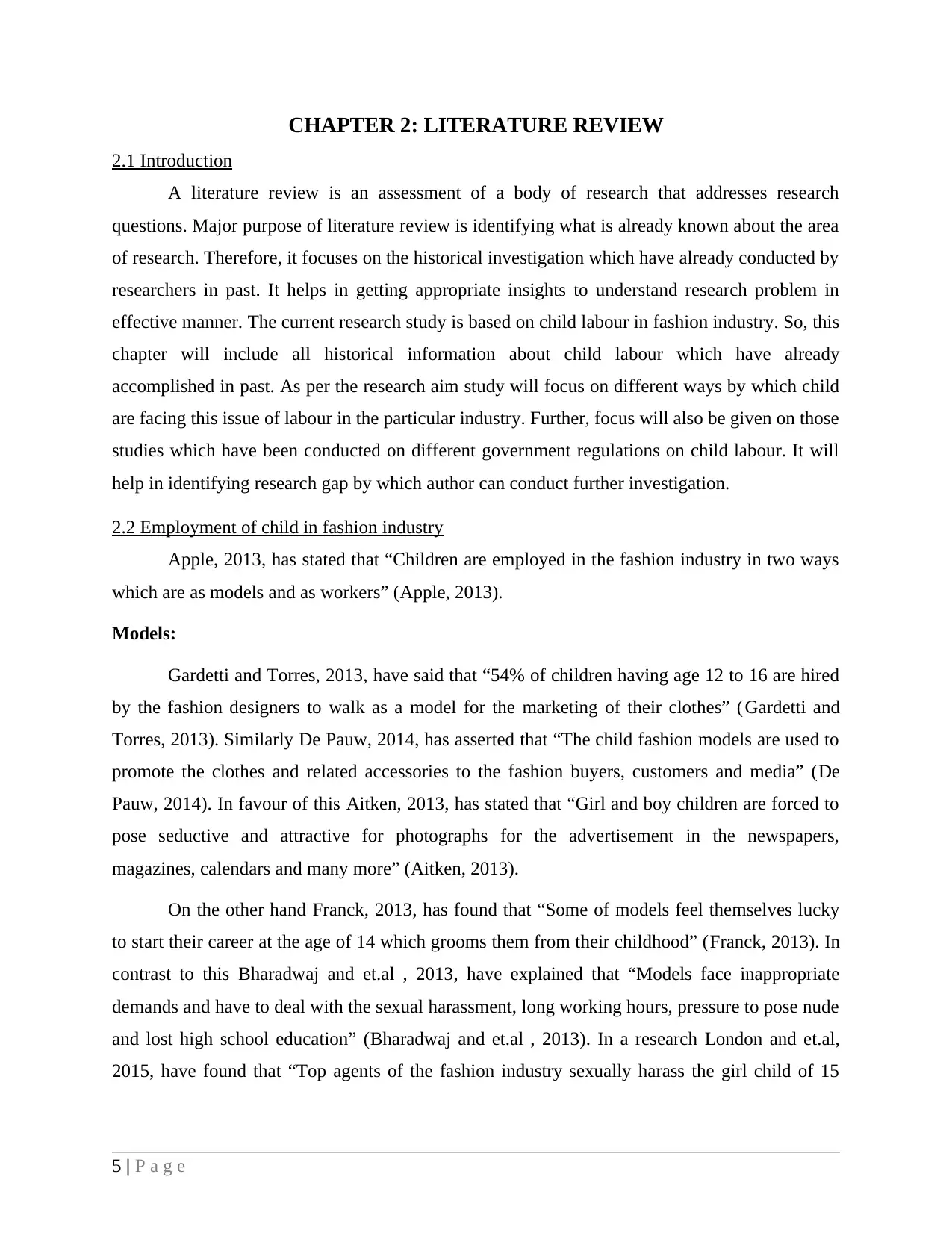
CHAPTER 2: LITERATURE REVIEW
2.1 Introduction
A literature review is an assessment of a body of research that addresses research
questions. Major purpose of literature review is identifying what is already known about the area
of research. Therefore, it focuses on the historical investigation which have already conducted by
researchers in past. It helps in getting appropriate insights to understand research problem in
effective manner. The current research study is based on child labour in fashion industry. So, this
chapter will include all historical information about child labour which have already
accomplished in past. As per the research aim study will focus on different ways by which child
are facing this issue of labour in the particular industry. Further, focus will also be given on those
studies which have been conducted on different government regulations on child labour. It will
help in identifying research gap by which author can conduct further investigation.
2.2 Employment of child in fashion industry
Apple, 2013, has stated that “Children are employed in the fashion industry in two ways
which are as models and as workers” (Apple, 2013).
Models:
Gardetti and Torres, 2013, have said that “54% of children having age 12 to 16 are hired
by the fashion designers to walk as a model for the marketing of their clothes” (Gardetti and
Torres, 2013). Similarly De Pauw, 2014, has asserted that “The child fashion models are used to
promote the clothes and related accessories to the fashion buyers, customers and media” (De
Pauw, 2014). In favour of this Aitken, 2013, has stated that “Girl and boy children are forced to
pose seductive and attractive for photographs for the advertisement in the newspapers,
magazines, calendars and many more” (Aitken, 2013).
On the other hand Franck, 2013, has found that “Some of models feel themselves lucky
to start their career at the age of 14 which grooms them from their childhood” (Franck, 2013). In
contrast to this Bharadwaj and et.al , 2013, have explained that “Models face inappropriate
demands and have to deal with the sexual harassment, long working hours, pressure to pose nude
and lost high school education” (Bharadwaj and et.al , 2013). In a research London and et.al,
2015, have found that “Top agents of the fashion industry sexually harass the girl child of 15
5 | P a g e
2.1 Introduction
A literature review is an assessment of a body of research that addresses research
questions. Major purpose of literature review is identifying what is already known about the area
of research. Therefore, it focuses on the historical investigation which have already conducted by
researchers in past. It helps in getting appropriate insights to understand research problem in
effective manner. The current research study is based on child labour in fashion industry. So, this
chapter will include all historical information about child labour which have already
accomplished in past. As per the research aim study will focus on different ways by which child
are facing this issue of labour in the particular industry. Further, focus will also be given on those
studies which have been conducted on different government regulations on child labour. It will
help in identifying research gap by which author can conduct further investigation.
2.2 Employment of child in fashion industry
Apple, 2013, has stated that “Children are employed in the fashion industry in two ways
which are as models and as workers” (Apple, 2013).
Models:
Gardetti and Torres, 2013, have said that “54% of children having age 12 to 16 are hired
by the fashion designers to walk as a model for the marketing of their clothes” (Gardetti and
Torres, 2013). Similarly De Pauw, 2014, has asserted that “The child fashion models are used to
promote the clothes and related accessories to the fashion buyers, customers and media” (De
Pauw, 2014). In favour of this Aitken, 2013, has stated that “Girl and boy children are forced to
pose seductive and attractive for photographs for the advertisement in the newspapers,
magazines, calendars and many more” (Aitken, 2013).
On the other hand Franck, 2013, has found that “Some of models feel themselves lucky
to start their career at the age of 14 which grooms them from their childhood” (Franck, 2013). In
contrast to this Bharadwaj and et.al , 2013, have explained that “Models face inappropriate
demands and have to deal with the sexual harassment, long working hours, pressure to pose nude
and lost high school education” (Bharadwaj and et.al , 2013). In a research London and et.al,
2015, have found that “Top agents of the fashion industry sexually harass the girl child of 15
5 | P a g e
Paraphrase This Document
Need a fresh take? Get an instant paraphrase of this document with our AI Paraphraser
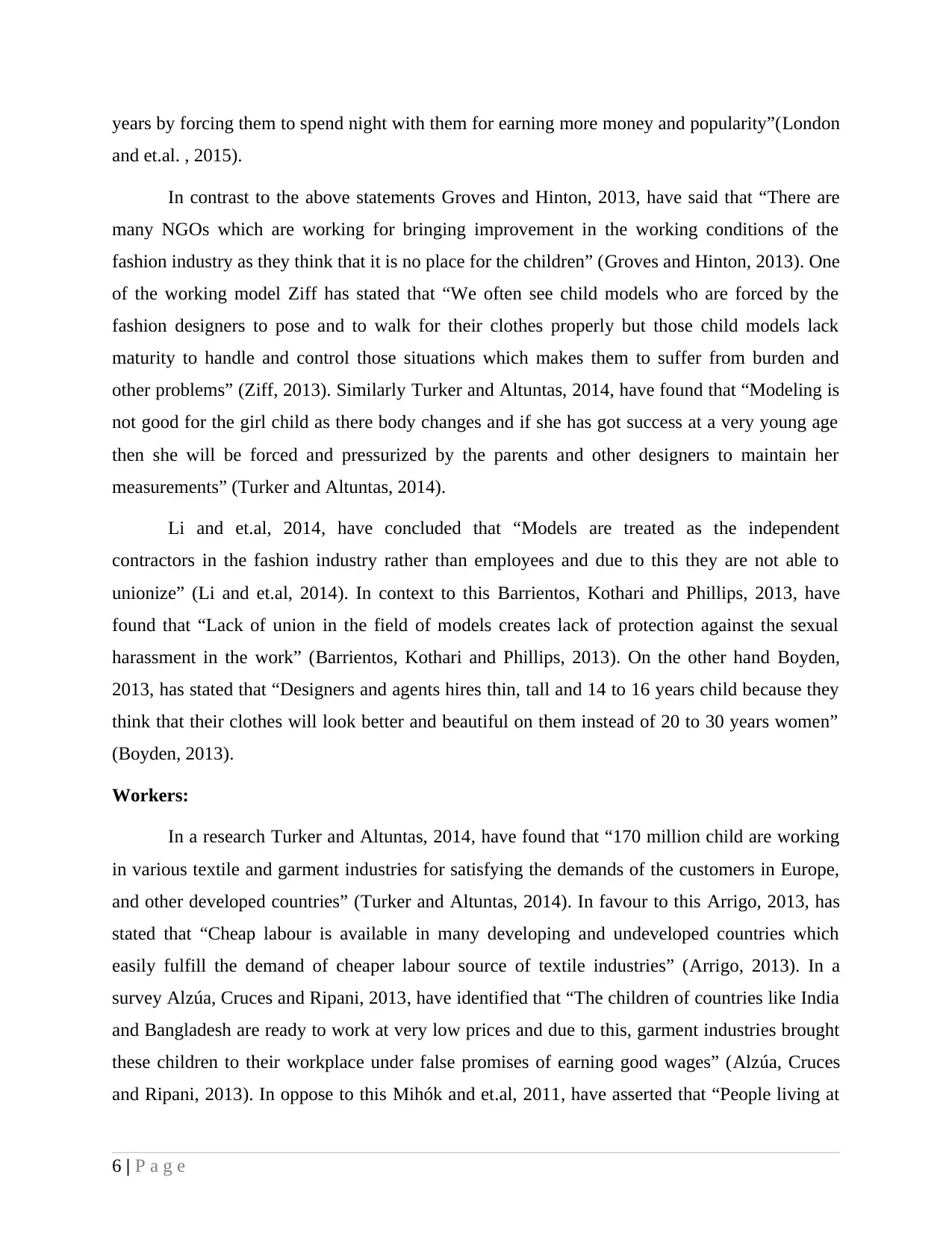
years by forcing them to spend night with them for earning more money and popularity”(London
and et.al. , 2015).
In contrast to the above statements Groves and Hinton, 2013, have said that “There are
many NGOs which are working for bringing improvement in the working conditions of the
fashion industry as they think that it is no place for the children” (Groves and Hinton, 2013). One
of the working model Ziff has stated that “We often see child models who are forced by the
fashion designers to pose and to walk for their clothes properly but those child models lack
maturity to handle and control those situations which makes them to suffer from burden and
other problems” (Ziff, 2013). Similarly Turker and Altuntas, 2014, have found that “Modeling is
not good for the girl child as there body changes and if she has got success at a very young age
then she will be forced and pressurized by the parents and other designers to maintain her
measurements” (Turker and Altuntas, 2014).
Li and et.al, 2014, have concluded that “Models are treated as the independent
contractors in the fashion industry rather than employees and due to this they are not able to
unionize” (Li and et.al, 2014). In context to this Barrientos, Kothari and Phillips, 2013, have
found that “Lack of union in the field of models creates lack of protection against the sexual
harassment in the work” (Barrientos, Kothari and Phillips, 2013). On the other hand Boyden,
2013, has stated that “Designers and agents hires thin, tall and 14 to 16 years child because they
think that their clothes will look better and beautiful on them instead of 20 to 30 years women”
(Boyden, 2013).
Workers:
In a research Turker and Altuntas, 2014, have found that “170 million child are working
in various textile and garment industries for satisfying the demands of the customers in Europe,
and other developed countries” (Turker and Altuntas, 2014). In favour to this Arrigo, 2013, has
stated that “Cheap labour is available in many developing and undeveloped countries which
easily fulfill the demand of cheaper labour source of textile industries” (Arrigo, 2013). In a
survey Alzúa, Cruces and Ripani, 2013, have identified that “The children of countries like India
and Bangladesh are ready to work at very low prices and due to this, garment industries brought
these children to their workplace under false promises of earning good wages” (Alzúa, Cruces
and Ripani, 2013). In oppose to this Mihók and et.al, 2011, have asserted that “People living at
6 | P a g e
and et.al. , 2015).
In contrast to the above statements Groves and Hinton, 2013, have said that “There are
many NGOs which are working for bringing improvement in the working conditions of the
fashion industry as they think that it is no place for the children” (Groves and Hinton, 2013). One
of the working model Ziff has stated that “We often see child models who are forced by the
fashion designers to pose and to walk for their clothes properly but those child models lack
maturity to handle and control those situations which makes them to suffer from burden and
other problems” (Ziff, 2013). Similarly Turker and Altuntas, 2014, have found that “Modeling is
not good for the girl child as there body changes and if she has got success at a very young age
then she will be forced and pressurized by the parents and other designers to maintain her
measurements” (Turker and Altuntas, 2014).
Li and et.al, 2014, have concluded that “Models are treated as the independent
contractors in the fashion industry rather than employees and due to this they are not able to
unionize” (Li and et.al, 2014). In context to this Barrientos, Kothari and Phillips, 2013, have
found that “Lack of union in the field of models creates lack of protection against the sexual
harassment in the work” (Barrientos, Kothari and Phillips, 2013). On the other hand Boyden,
2013, has stated that “Designers and agents hires thin, tall and 14 to 16 years child because they
think that their clothes will look better and beautiful on them instead of 20 to 30 years women”
(Boyden, 2013).
Workers:
In a research Turker and Altuntas, 2014, have found that “170 million child are working
in various textile and garment industries for satisfying the demands of the customers in Europe,
and other developed countries” (Turker and Altuntas, 2014). In favour to this Arrigo, 2013, has
stated that “Cheap labour is available in many developing and undeveloped countries which
easily fulfill the demand of cheaper labour source of textile industries” (Arrigo, 2013). In a
survey Alzúa, Cruces and Ripani, 2013, have identified that “The children of countries like India
and Bangladesh are ready to work at very low prices and due to this, garment industries brought
these children to their workplace under false promises of earning good wages” (Alzúa, Cruces
and Ripani, 2013). In oppose to this Mihók and et.al, 2011, have asserted that “People living at
6 | P a g e
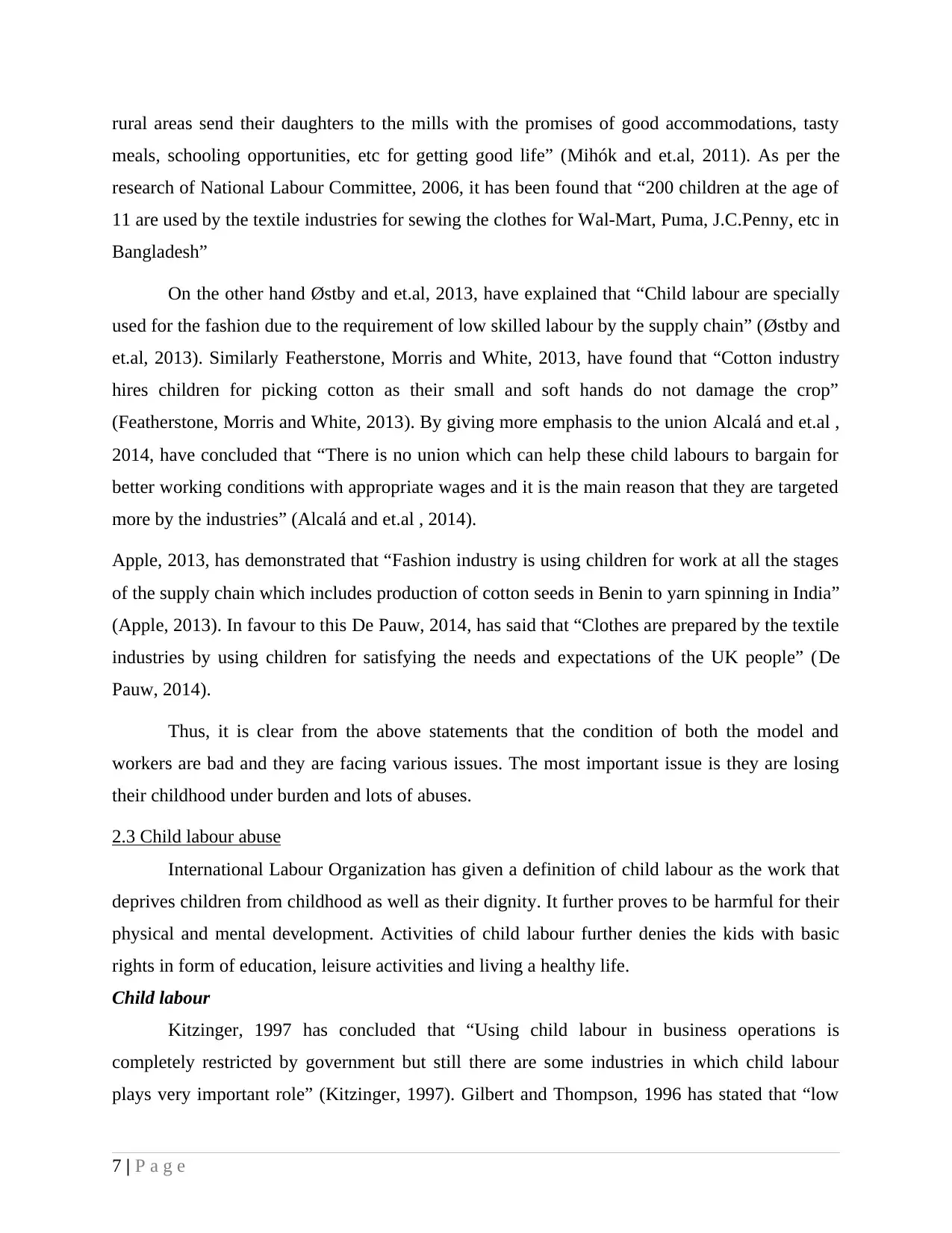
rural areas send their daughters to the mills with the promises of good accommodations, tasty
meals, schooling opportunities, etc for getting good life” (Mihók and et.al, 2011). As per the
research of National Labour Committee, 2006, it has been found that “200 children at the age of
11 are used by the textile industries for sewing the clothes for Wal-Mart, Puma, J.C.Penny, etc in
Bangladesh”
On the other hand Østby and et.al, 2013, have explained that “Child labour are specially
used for the fashion due to the requirement of low skilled labour by the supply chain” (Østby and
et.al, 2013). Similarly Featherstone, Morris and White, 2013, have found that “Cotton industry
hires children for picking cotton as their small and soft hands do not damage the crop”
(Featherstone, Morris and White, 2013). By giving more emphasis to the union Alcalá and et.al ,
2014, have concluded that “There is no union which can help these child labours to bargain for
better working conditions with appropriate wages and it is the main reason that they are targeted
more by the industries” (Alcalá and et.al , 2014).
Apple, 2013, has demonstrated that “Fashion industry is using children for work at all the stages
of the supply chain which includes production of cotton seeds in Benin to yarn spinning in India”
(Apple, 2013). In favour to this De Pauw, 2014, has said that “Clothes are prepared by the textile
industries by using children for satisfying the needs and expectations of the UK people” (De
Pauw, 2014).
Thus, it is clear from the above statements that the condition of both the model and
workers are bad and they are facing various issues. The most important issue is they are losing
their childhood under burden and lots of abuses.
2.3 Child labour abuse
International Labour Organization has given a definition of child labour as the work that
deprives children from childhood as well as their dignity. It further proves to be harmful for their
physical and mental development. Activities of child labour further denies the kids with basic
rights in form of education, leisure activities and living a healthy life.
Child labour
Kitzinger, 1997 has concluded that “Using child labour in business operations is
completely restricted by government but still there are some industries in which child labour
plays very important role” (Kitzinger, 1997). Gilbert and Thompson, 1996 has stated that “low
7 | P a g e
meals, schooling opportunities, etc for getting good life” (Mihók and et.al, 2011). As per the
research of National Labour Committee, 2006, it has been found that “200 children at the age of
11 are used by the textile industries for sewing the clothes for Wal-Mart, Puma, J.C.Penny, etc in
Bangladesh”
On the other hand Østby and et.al, 2013, have explained that “Child labour are specially
used for the fashion due to the requirement of low skilled labour by the supply chain” (Østby and
et.al, 2013). Similarly Featherstone, Morris and White, 2013, have found that “Cotton industry
hires children for picking cotton as their small and soft hands do not damage the crop”
(Featherstone, Morris and White, 2013). By giving more emphasis to the union Alcalá and et.al ,
2014, have concluded that “There is no union which can help these child labours to bargain for
better working conditions with appropriate wages and it is the main reason that they are targeted
more by the industries” (Alcalá and et.al , 2014).
Apple, 2013, has demonstrated that “Fashion industry is using children for work at all the stages
of the supply chain which includes production of cotton seeds in Benin to yarn spinning in India”
(Apple, 2013). In favour to this De Pauw, 2014, has said that “Clothes are prepared by the textile
industries by using children for satisfying the needs and expectations of the UK people” (De
Pauw, 2014).
Thus, it is clear from the above statements that the condition of both the model and
workers are bad and they are facing various issues. The most important issue is they are losing
their childhood under burden and lots of abuses.
2.3 Child labour abuse
International Labour Organization has given a definition of child labour as the work that
deprives children from childhood as well as their dignity. It further proves to be harmful for their
physical and mental development. Activities of child labour further denies the kids with basic
rights in form of education, leisure activities and living a healthy life.
Child labour
Kitzinger, 1997 has concluded that “Using child labour in business operations is
completely restricted by government but still there are some industries in which child labour
plays very important role” (Kitzinger, 1997). Gilbert and Thompson, 1996 has stated that “low
7 | P a g e
⊘ This is a preview!⊘
Do you want full access?
Subscribe today to unlock all pages.

Trusted by 1+ million students worldwide
1 out of 43
Related Documents
Your All-in-One AI-Powered Toolkit for Academic Success.
+13062052269
info@desklib.com
Available 24*7 on WhatsApp / Email
![[object Object]](/_next/static/media/star-bottom.7253800d.svg)
Unlock your academic potential
Copyright © 2020–2025 A2Z Services. All Rights Reserved. Developed and managed by ZUCOL.





